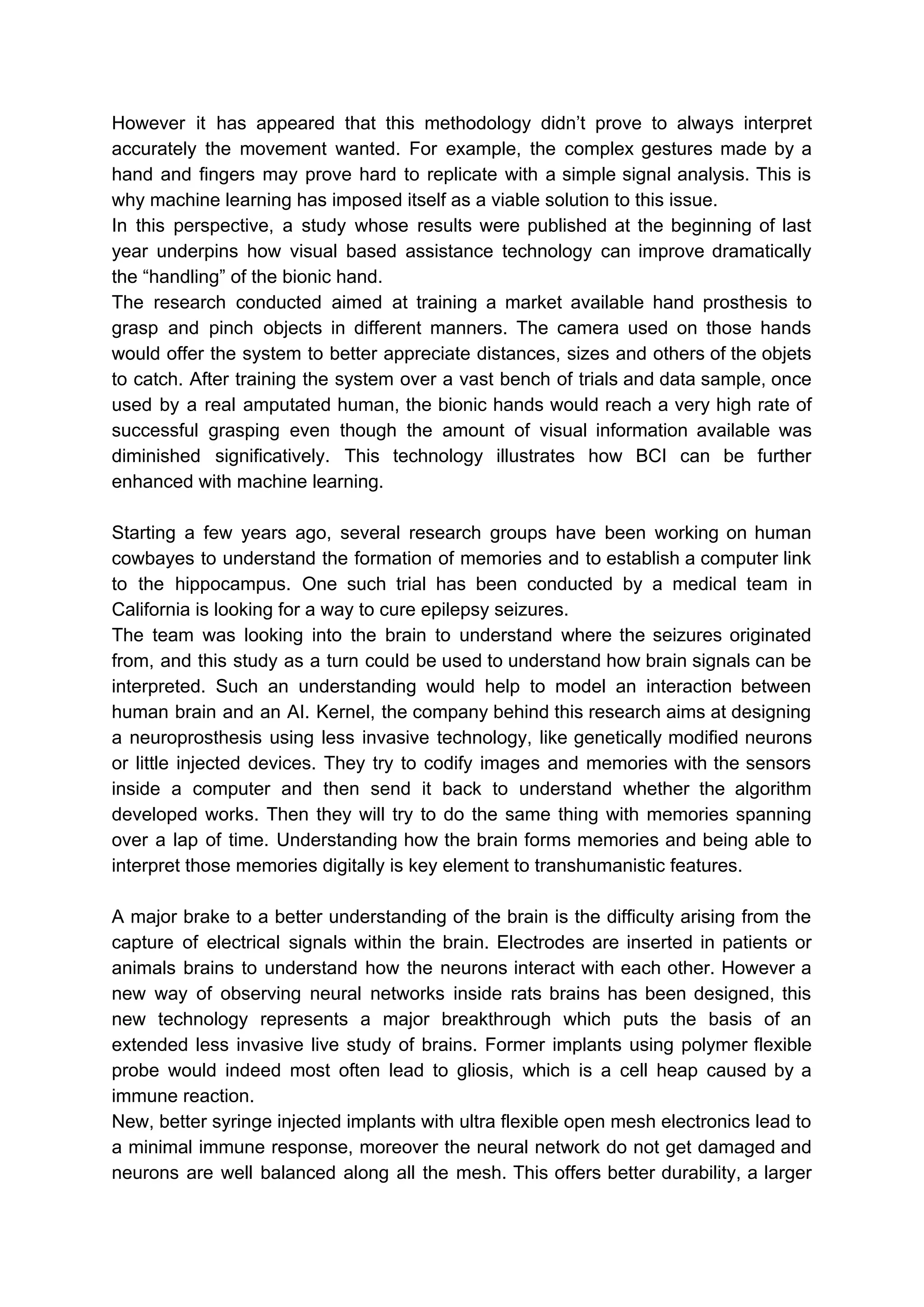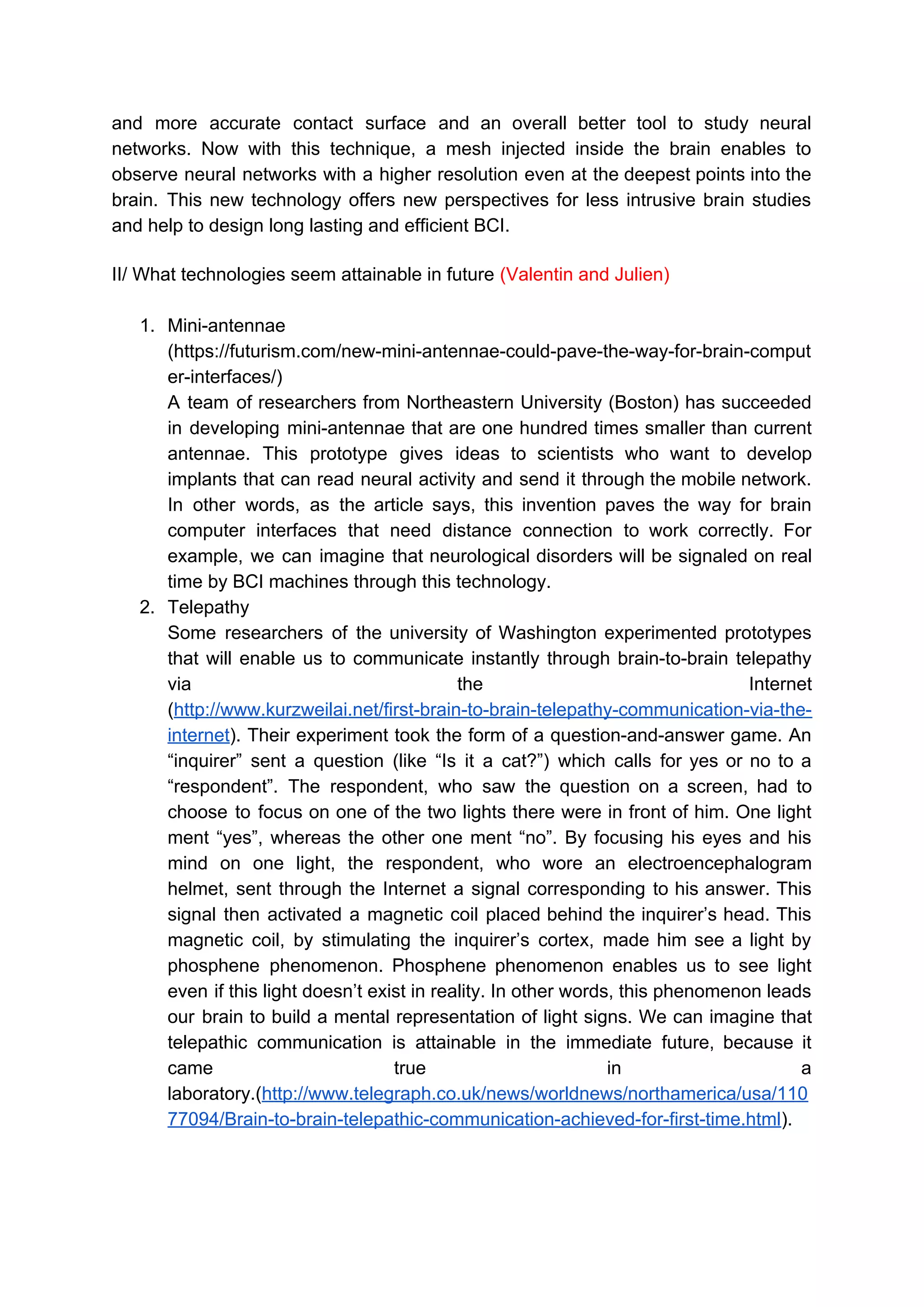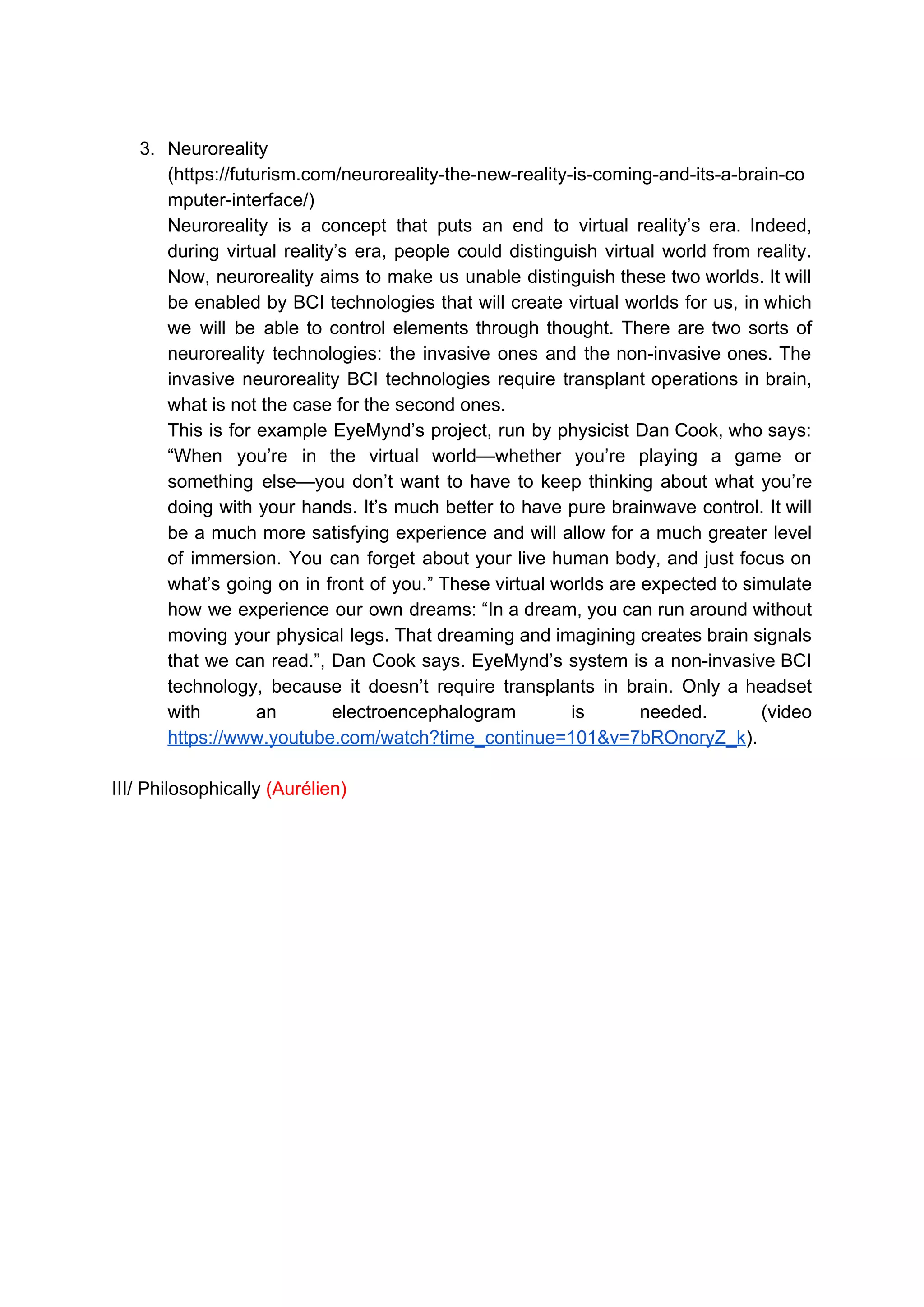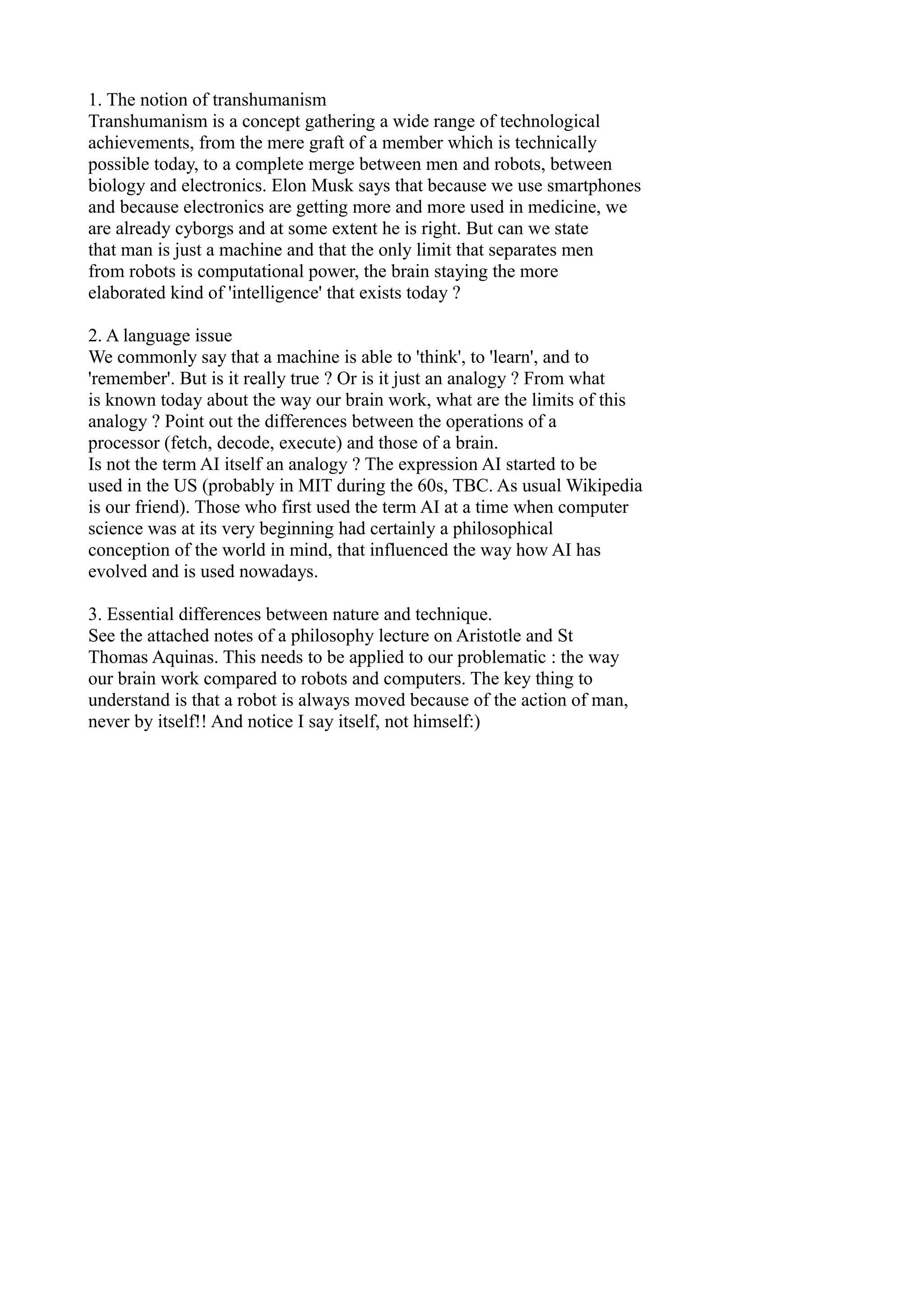The document explores the intersection of transhumanism and brain-computer interfaces, discussing current technologies that connect the human brain with artificial intelligence and potential future developments. It highlights advancements such as brain implants for movement restoration, mini-antennae for neural communication, and the possibility of brain-to-brain telepathy. Philosophically, it questions the essence of transhumanism, the nature of intelligence in machines compared to humans, and the fundamental differences between biological and technological systems.




